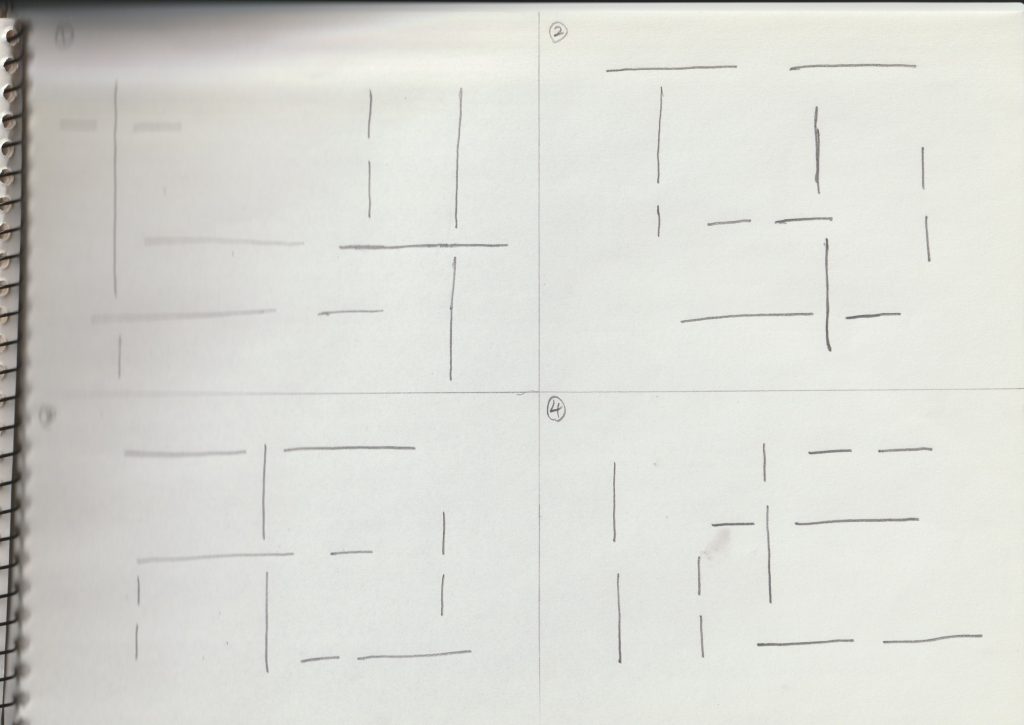This time, I developed a basic concept for the rail arrangement. As previously planned, I divided a total of 12 speakers into 6 pairs facing each other, and designed two types of rail lengths: short and long. I equated the short length to an individual and the long length to society, creating a total of 6 pairs: two short vs. short (individual to individual), one short vs. long (individual to society), and two long vs. long (society to society). To present these in an aesthetically pleasing manner, I created four design examples. The rail directions were limited to horizontal and vertical, with no diagonal configurations explored yet.

After creating these four designs, I surveyed about 25 people through social media and in-person questions to gauge their intuitive preferences. The results showed a preference order of 4-3-2-1, with designs 3 and 4 accounting for approximately 90% of the opinions. I was quite surprised by this outcome, as I had personally favored design 1. When I asked them, I did not explain the intention or purpose of these layouts; I simply asked them to choose the one they intuitively liked the most. According to a friend, designs 3 and 4 might have been preferred because their lines were drawn more neatly. This made me realize that for future layouts, I need to ensure consistency in drawing, perhaps by using digital tools or rulers.
Additionally, when conceptualizing the next set of layouts, I will consider incorporating diagonal lines and exploring arrangements where rails can overlap (in a three-dimensional form).